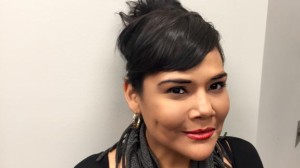Unfortunately Not an Archaic Procedure of the Past
We as Canadians have a dark history of oppression and violence enacted upon marginalized populations. Unfortunately, some of this oppression and violence lives on, often occurring under the radar of many Canadians’ knowledge.

The sterilization of vulnerable and marginalized groups was used as a process of eugenics in a much more direct and public manner in the past. For example, from 1928 to 1972,, both compulsory and “optional” sterilization procedures were performed on individuals of varying age and ethnicities. I say “optional” because in many cases, the vulnerability of individuals were exploited and although there appeared to be “choice” for these individuals, there was not—they were pressured into consenting to these sterilizations.
During this time period, statues such as the Alberta Sexual Sterilization Act of 1928 were used to justify these procedures. Youth, minorities, and women were sterilized in disproportionately high numbers. Youth would be rendered “mental defectives” so that parental consent could be bypassed. By and large, Aboriginal people were targeted—a thought to rid the Canadian population of these people, who were also commonly rendered “mentally deficient” to justify these sterilizations of Aboriginal men, women, and children. Women who were young, poor, and unmarried were also targeted; they were thought to be at risk of “breeding further immorality.” Finally, the other largely targeted group was people with disabilities, where prejudice against physical and mental disability reigned supreme, with arguments such as societal costs of caring for the disabled being used and fear of the disabled population growing if they were to reproduce. These arguments and the reality of our Canadian past in this matter are absolutely horrifying, but this did occur. Many institutions promoted these ideals in Ontario and across the nation; they took advantage of vulnerable people, especially looking to people with disabilities, and often there was only constructed consent.
Moving to current affairs, this appalling history has not been completely erased. There are still,, for example, institutions where people with disabilities are sterilized without consent or with constructed consent. Most recently in the news, Aboriginal women have said they were sterilized against their will in hospital. The eugenics argument which should be a permanent fixture of the past is sadly not; instead, it creeps up in more indirect and subtle manners within our so called “current progressive” society.
Brenda Pelletier, a Métis woman, checked in to the Royal University Hospital in Saskatoon five years ago to give birth to her baby girl. When she left, she was sterilized with her tubes tied. Pelletier recounts how the tubal ligation procedure happened after she was pressured into it by hospital staff, while she was in a vulnerable state. Pelletier stated, “I’m laying there, scared enough, not wanting this done, telling her I didn’t want it done. All of a sudden I smell something burning. If I could’ve moved my legs, I probably would’ve kicked her.” This happened five years ago; while you may have read the Canadian history of sterilization above and thought at least it is in the past, it sadly is not.
There are at least three other Aboriginal women who have come forward to say they were pressured to be sterilized at the Saskatoon hospital in recent years. Melika Popp is another Aboriginal woman who was pressured into being sterilized when she delivered her second child in 2008 at the Royal University Hospital. Popp stated, “They ultimately assured me that it could be reversed… and I believed them, I trusted them at face value.” It becomes clear the vulnerabilities of these women were being exploited. Some of the vulnerabilities,, such as lack of medical knowledge,, are things most of us can understand. When a medical professional gives you advice, most of us do take that advice at face value because it is an area many of us are not well versed in. This lack of medical knowledge was just one vulnerability at play here with the Aboriginal women involved. These stories unfortunately appear to be part of a wider dark history Canada has with eugenics and sterilization of vulnerable populations.
The Saskatoon Health Region is planning an external independent review into the allegations that women were pressured to consent to tubal litigations. However, one can wonder how many other women, racialized communities, and people with disabilities are out there with the same stories. Especially when dealing with people with disabilities, many of the stories will never resurface as their ability to tell their stories is systemically oppressed.
For more information and to hear the stories of these Aboriginal women please listen to this episode of the Current: http://www.cbc.ca/radio/thecurrent/the-current-for-january-7-2016-1.3393099/aboriginal-women-say-they-were-sterilized-against-their-will-in-hospital-1.3393143
